What Are The Drawbacks To Solar Tube Lighting | Are They Worth Buying?
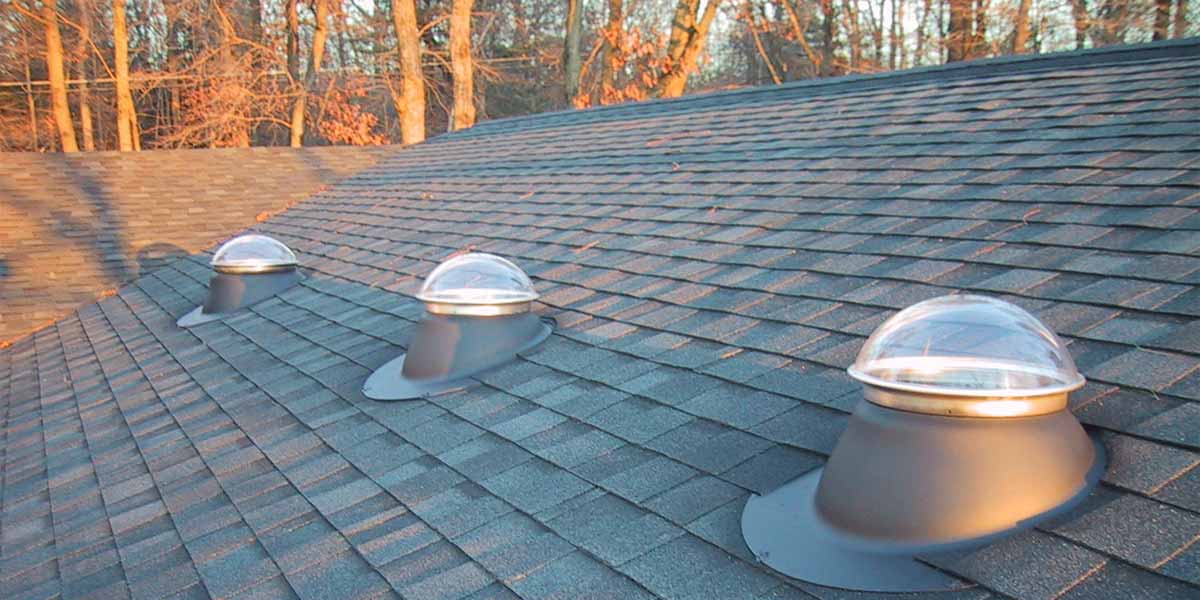
The solar tube lighting system has become immensely popular in the recent past along with other solar lights like solar gutter lights or solar uplights. The more the demand for contemporary artificial lights, the more these solar lighting tubes come to the rescue. They are well suited for homes, businesses, and other buildings as well.
Additionally, it is a great alternative to skylights and is much more cost-effective. Although they offer pretty bright and natural white light, solar light tubes are also not free of limitations, just like any other product.
They don’t provide a view of the sky as the skylight and cannot be installed in every home either. After you have installed a solar tube light, you should not require an indoor solar light for your home.
What Is Solar Tube Lighting?

Solar tubes can be defined as a perfect, innovative, and convenient alternative to the traditional skylight. Solar tubes are also called by different names such as solar tube skylight, sun tunnel, light tubes, daylight tubes, tubular skylight, etc.
To elaborate, these are precisely polished metal sheets placed on top of the roof membrane and can trap the energy from the sunlight outside into the room. Interestingly, they transfer the heat through a metallic tube and without electricity. Thus, a solar tube basically illuminates the dark corners of a room by conveying the outside light in.
Now, you may wonder, since a solar tube is placed on the roof, how does it protect itself from environmental factors? The answer is quite simple. The solar tube is covered with a dome that is translucent and waterproof. Solar tubes also come in different colors, sizes, and shapes, and thus, plenty of dishes to choose from the plate!
How Does Solar Tube Lighting Work?
Let’s understand the functionality of solar tubes a little better. So, solar tubes usually contain two tubes: a collector tube or a positive tube consisting of the collected light emitted by the solar tube into the house, and an emitter tube or a negative tube consisting of the light produced by converting the solar radiation into light.
Furthermore, these lights are manufactured to optimally transfer as much sunlight as possible into the house in the form of light.
What are the drawbacks to solar tube lighting? Although solar tube installation may be relatively easier and more convenient, it is not free from drawbacks. Some of the most significant yet common problems with solar tubes are:
Disadvantages Of Solar Lighting Tube
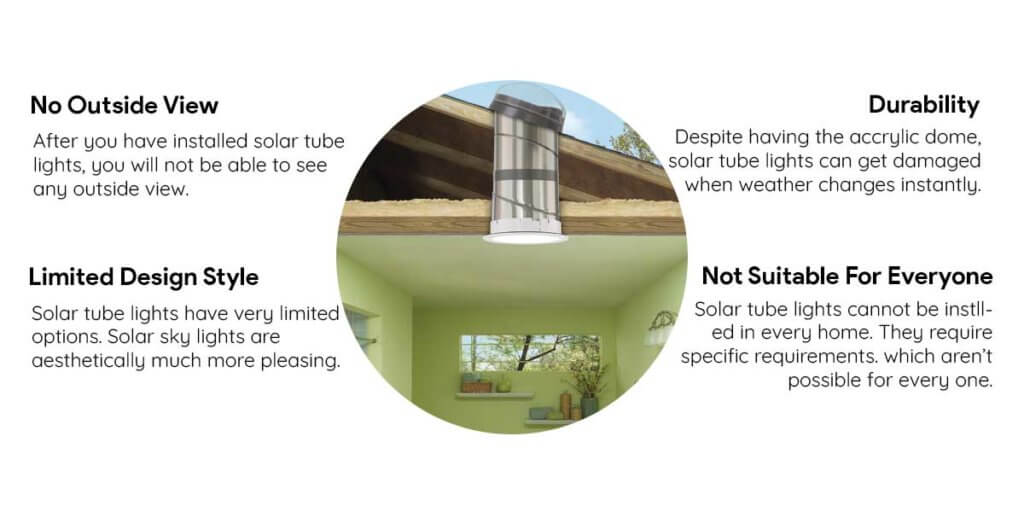
1. No Outside View
Since solar tubes are primarily designed to let in light and not for the view, they usually do not offer a great visual experience compared to traditional skylights.
2. Limited Design Style
Although they are quite flexible and can be placed anywhere inside a house, they are equally unobtrusive. While they are pretty efficient at their job, people usually strive for options that would be efficient and aesthetically pleasing in design and feeling.
3.Uses Lots Of Space During Installation
Although they are comparatively smaller in size, in the case of a smaller house, installing solar tubes may take up a lot of space. Thus, it’s suitable for houses with big spaces, rather than smaller ones where every inch counts.
4. Durability
Well, one of the most unpleasant facts about solar tube lights is that they are very prone to damage in extreme temperatures, and therefore, are not very durable. If the weather changes to extremely hot or cold, it may cause the solar light covered in an acrylic dome to crack.
5. Not Suitable For Every Home
To explain this in detail, the kind of roof in a house duly affects installing a solar tube lighting system. For example, most solar tube lighting systems are designed to fit into the conventional roof types, which have a 15-60 degrees slant. Also, flat or steep roof types are not very friendly to solar tube installations. Apart from that, another important thing to keep in mind is the material used for the roof.
6. Lack Of Ventilation
One of the biggest drawbacks of solar tubes is that nobody can install a ventilation system, which makes it impossible to release heat or even trap a breeze when and if required.
7. Noisy
While most solar tube domes do not produce noise, some come with additional aluminum reflectors for boosting more sunlight, which creates noises, especially on breezy days.
Advantages Of Solar Tube Lighting
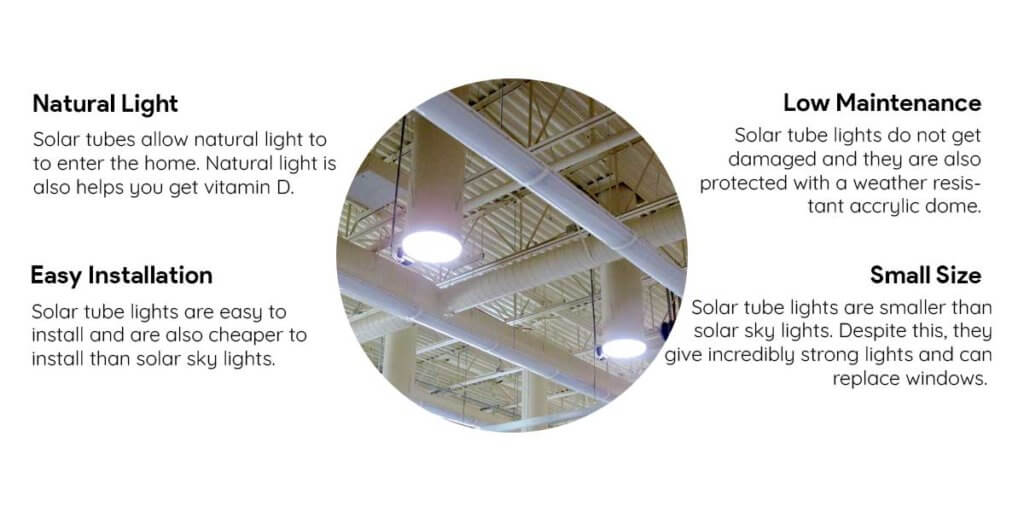
After reading the difference between Solar tube lights and Solar skylights, you must have got an idea of tubular skylight pros and cons.
In the next section, we will discuss the pros and cons of solar tube lights, why they are considered the better option, and how they may impact our general standard of living. The advantages of solar tube lighting are as follows:
1. Natural Light
Interestingly, solar tubes allow natural daylight to enter your home, making it feel like the brightest spot all around. They can easily replace your regular windows for the incredible amount of light they let in without the need for installing additional skylights to add to the natural light source.
Needless to say, natural light is not only good for your health but also keeps the house hygienic in many ways. Moreover, it’s a natural source of Vitamin D that helps enhance sleep quality and reduces health issues.
Well, hold on till you realize that solar tubes are also super efficient in saving power and electricity. Thus, they are extremely convenient and offer several benefits for both the house and you. It’s a win-win situation!
2. Easy Installation
How to install a solar tube? Before we delve into that, one of the reasons solar tubes are cheaper compared to skylights is because they are very easy to install and do not require heap loads of money in the process of installation. Also, there is no need to alter the drywall to install solar tubes.
3. Low Maintenance
They don’t get damaged easily and therefore do not require a lot of money for maintenance. They are protected with a weather-resistant acrylic dome and thus, do not require any additional efforts to look after them.
4. Small Size
Solar tubes are much smaller in size than the skylights and consume less space than the latter. Despite the small size, solar tubes give off an incredible amount of light which can easily replace the regular windows for a proper source of natural light into the room. They are also available in different shapes and sizes, with customizable color options.
5. Cost-Effective
As we already know, solar tubes are highly cost-effective and, therefore, are preferred over traditional skylights. They can usually cost anywhere from $500 to $1000.
6. Environmental Friendly
Since solar tubes use solar energy or renewable energy to function, they don’t emit dangerous gases into the environment, which makes them an eco-friendly option.
7. Flexible Design
Their flexible designs allow them to let inside more if natural light without the requirement to change the overall structure of the room. Thus, they can be used anywhere, for example, the closet room, living space, the hallway, bedrooms, etc., to enhance the quality of light.
8. No Leakage
Unlike skylights, solar tubes are also leakage-free due to their dome-shaped structure, which prevents water or debris residue on top of it.
Difference Between Solar Tube And Skylight

Now, if we begin to compare solar tubes with traditional skylights based on their energy efficiency, the former is undoubtedly more effective. Solar tubes capture sunlight only to scatter the light inside the home, spreading out to each and every corner.
Although skylights are known to do their jobs better than regular windows, the sunlight’s energy usually gets faded over time and is converted into heat gain during hotter climates.
If we talk about the harmful UV rays from the sun, solar tubes are preferred more than the traditional skylight when protecting from the same. Although skylights are also placed on the roof of the house, they usually only filter and reduce the effect of the UV rays.
On the other hand, when compared, solar tubes generally block the UV rays completely to prevent them from entering the house. Thus, solar tubes have the upper hand in this case.
Another important issue associated with both the solar tubes and the skylights is water condensation. The best way to deal with it in the case of solar tubes and skylights is by using a humidifier in the house to prevent condensation in the former and covering the solar tube with proper insulation to protect it from water condensation.
Let’s talk about the appearance of the two. While solar tubes are considered pretty contemporary in terms of designs, skylights are usually more aesthetically pleasing, with better designs, and have an aura that makes both the day and the night view of the sky from the skylight immensely beautiful.
Thus, in short, solar tubes are great at their job, but if you’re looking for something to add more character to your house, a skylight is definitely the answer.
Conclusion
While there are many things that one should keep in mind before opting for solar tube lights, they can be the perfect décor for illuminating homes and offices with style and innovation.
Also, who doesn’t love big and bright windows that let in natural light into the house? However, if you don’t have many, solar tube lighting can help get over your feeling of uncomfort and make your home more comfortable and warm.

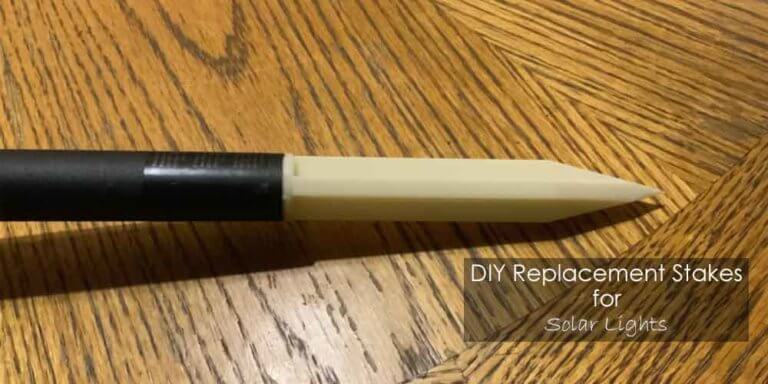
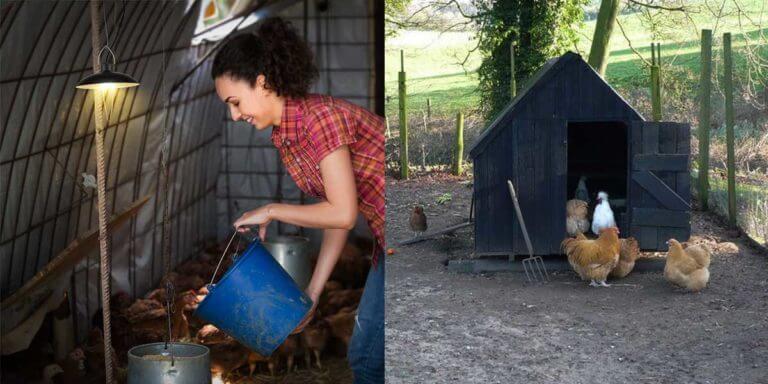
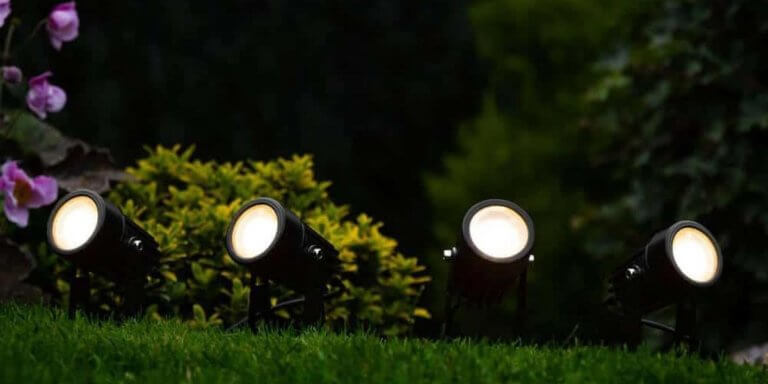

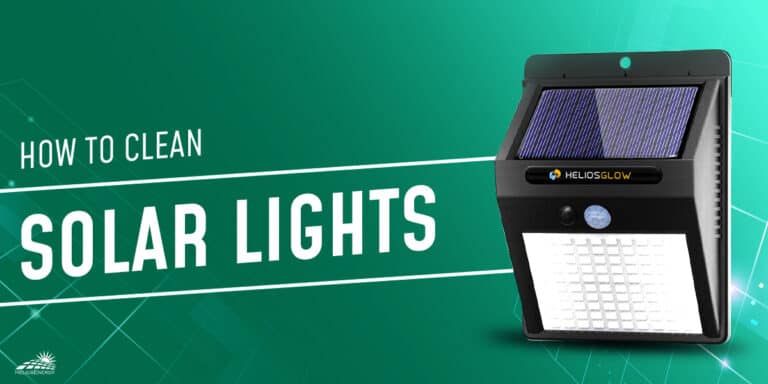
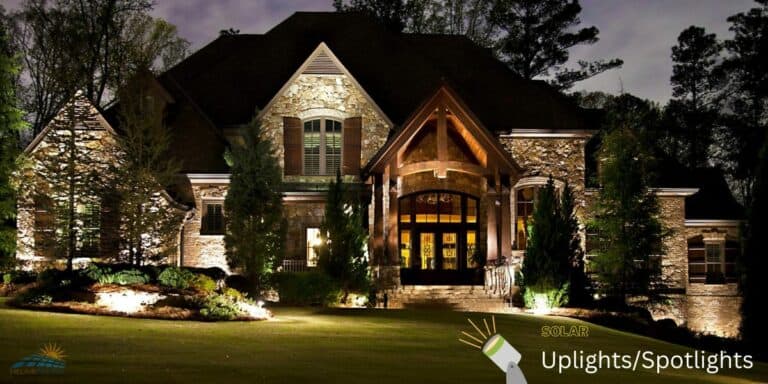
Hello,
I work for a company that sells these products and I am very familiar with “solar tubes” which is actually an incorrect use of Solatubes or “sun tunnels” as other companies call them. A lot of the information you are giving is incorrect. I’m actually shocked that no one vetted and checked this information. This image at the top even seems to be decades old. There are not noisy. They do not prevent ventilation. They can certainly be installed on flat or steep roofs. The domes are made to resist even extreme weather. Also, they’re actually quite suitable for small spaces. My home is under 1000 sq ft and they’re amazing in it. They have multiple fixture options to suit someone’s home or design esthetic. Please do your research on solatubehome.com next time or experience them yourself. I would be happy to see this article revised to be more accurate.